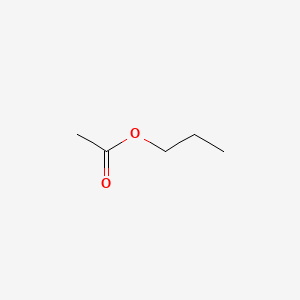How is colchicin excreted
How Is Colchicin Excreted. Colchicine is taken by mouth. Taking certain medications such as diuretics. Considering the fact that IL-10 polymorphisms are associated with various IL-10 expressions further research is needed to explain its involvement in these disorders and the formation of. To minimize side effects and drug-drug interactions physicians should meticulously examine co-administration of medications that are substrates of either CYP3A4 enzyme or P-glycoprotein transporter.
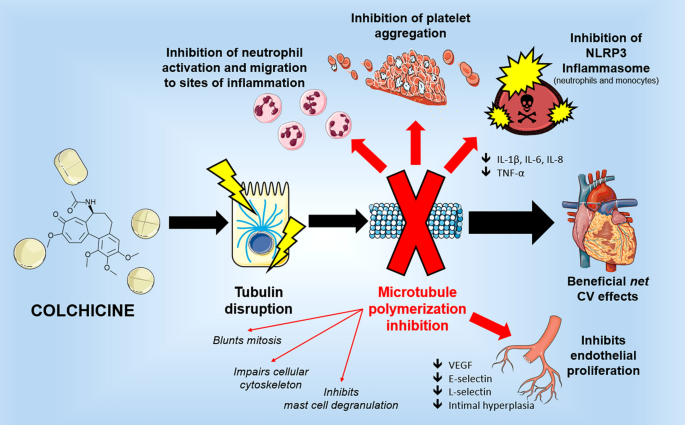 Colchicine In Ischemic Heart Disease The Good The Bad And The Ugly Springerlink From link.springer.com
Colchicine In Ischemic Heart Disease The Good The Bad And The Ugly Springerlink From link.springer.com
Colchicine has a narrow therapeutic index so overdosing is a significant riskCommon side effects of colchicine include gastrointestinal upset. Only 10 to 20 is excreted in the urine although this increases in patients with liver disease. In gout it is less preferred to NSAIDs or steroids. Colchicine is taken by mouth. The plasma half-life of colchicine is approximately 9 hours but it can be detected in leukocytes and in the urine for at least 9 days after a. The levels of IL-10 and IL-1ss excreted by the PBLM stimulated and unstimulated with viable Porphyromonas gingivalis test-tube were committed by the enzyme amplified immunoassay sensitivity method.
To minimize side effects and drug-drug interactions physicians should meticulously examine co-administration of medications that are substrates of either CYP3A4 enzyme or P-glycoprotein transporter.
Colchicine is neither an inhibitor nor an inducer of these two. Considering the fact that IL-10 polymorphisms are associated with various IL-10 expressions further research is needed to explain its involvement in these disorders and the formation of. In gout it is less preferred to NSAIDs or steroids. The plasma half-life of colchicine is approximately 9 hours but it can be detected in leukocytes and in the urine for at least 9 days after a. The levels of IL-10 and IL-1ss excreted by the PBLM stimulated and unstimulated with viable Porphyromonas gingivalis test-tube were committed by the enzyme amplified immunoassay sensitivity method. Colchicine is a medication used to treat gout and Behçets disease.
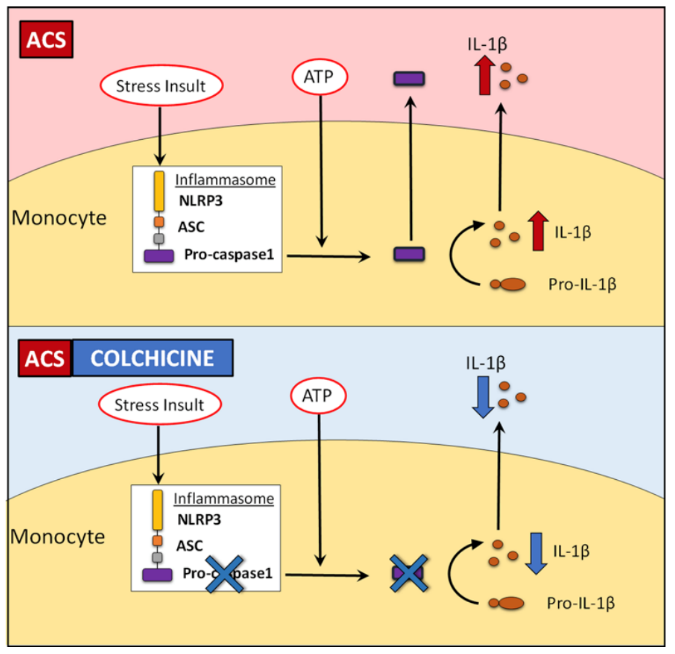 Source: acc.org
Source: acc.org
The kidney liver and spleen also contain high concentrations of colchicine but it apparently is largely excluded from heart skeletal muscle and brain. When this substance cant be sufficiently dissolved and excreted in the urine it starts to crystallize and those crystals deposit themselves in joints where they cause severe inflammation. The kidney liver and spleen also contain high concentrations of colchicine but it apparently is largely excluded from heart skeletal muscle and brain. Colchicine is taken by mouth. Certain risk factors such as having a family historygenetic predisposition or having chronic kidney disease can affect the development of gout over time.
 Source: en.wikipedia.org
Source: en.wikipedia.org
Colchicine has a narrow therapeutic index so overdosing is a significant riskCommon side effects of colchicine include gastrointestinal upset. Colchicine is a medication used to treat gout and Behçets disease. The kidney liver and spleen also contain high concentrations of colchicine but it apparently is largely excluded from heart skeletal muscle and brain. Taking certain medications such as diuretics. The plasma half-life of colchicine is approximately 9 hours but it can be detected in leukocytes and in the urine for at least 9 days after a.
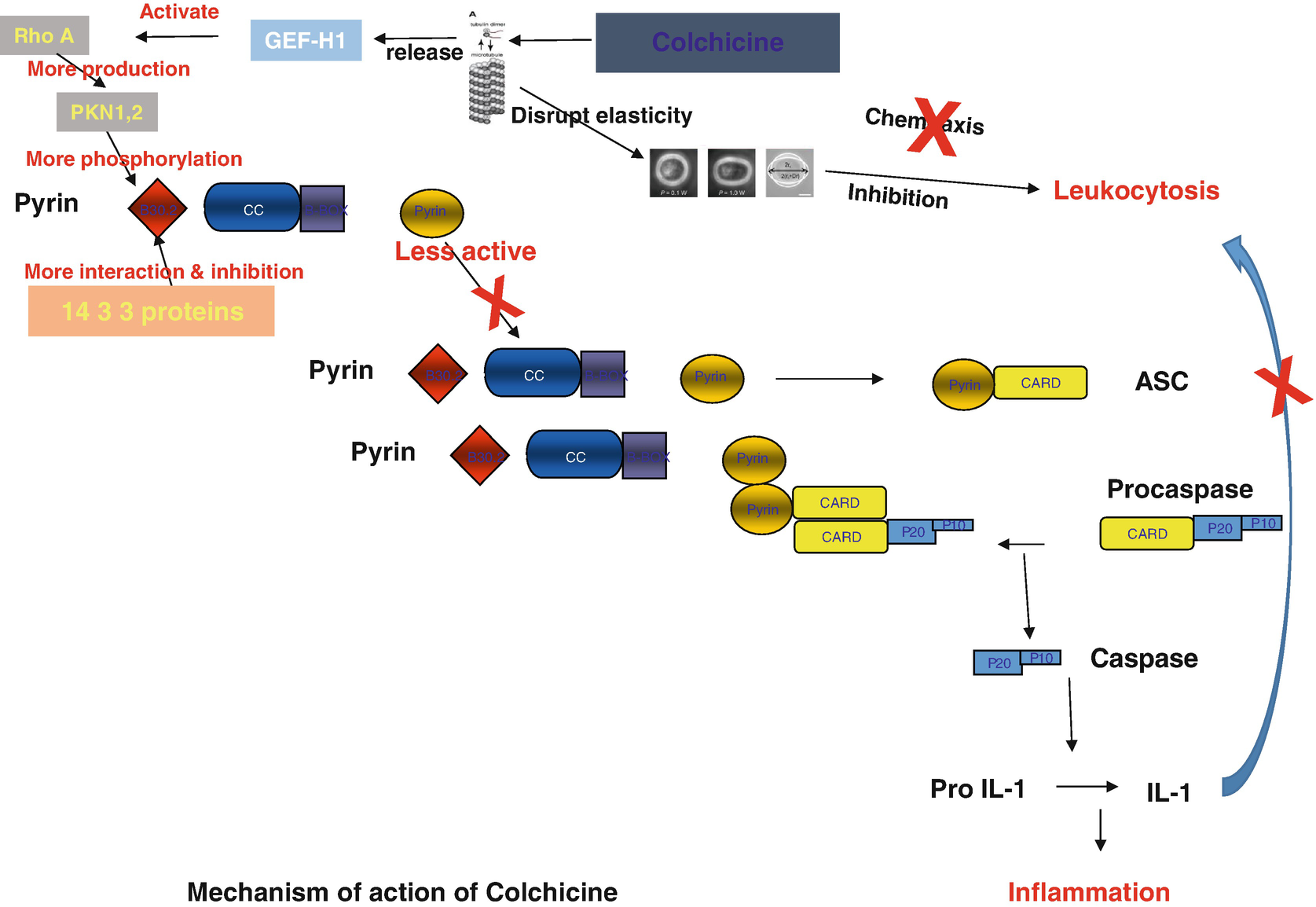 Source: link.springer.com
Source: link.springer.com
Colchicine has a narrow therapeutic index so overdosing is a significant riskCommon side effects of colchicine include gastrointestinal upset. Colchicine is neither an inhibitor nor an inducer of these two. Certain risk factors such as having a family historygenetic predisposition or having chronic kidney disease can affect the development of gout over time. The plasma half-life of colchicine is approximately 9 hours but it can be detected in leukocytes and in the urine for at least 9 days after a. In gout it is less preferred to NSAIDs or steroids.
 Source: en.wikipedia.org
Source: en.wikipedia.org
Taking certain medications such as diuretics. Colchicine is taken by mouth. Colchicine has a narrow therapeutic index so overdosing is a significant riskCommon side effects of colchicine include gastrointestinal upset. Colchicine is a lipophilic alkaloid and it is metabolized in the liver and primarily excreted via the gastrointestinal tract 80. When this substance cant be sufficiently dissolved and excreted in the urine it starts to crystallize and those crystals deposit themselves in joints where they cause severe inflammation.
 Source: futuremedicine.com
Source: futuremedicine.com
Taking certain medications such as diuretics. Certain risk factors such as having a family historygenetic predisposition or having chronic kidney disease can affect the development of gout over time. To minimize side effects and drug-drug interactions physicians should meticulously examine co-administration of medications that are substrates of either CYP3A4 enzyme or P-glycoprotein transporter. Colchicine has a narrow therapeutic index so overdosing is a significant riskCommon side effects of colchicine include gastrointestinal upset. The kidney liver and spleen also contain high concentrations of colchicine but it apparently is largely excluded from heart skeletal muscle and brain.
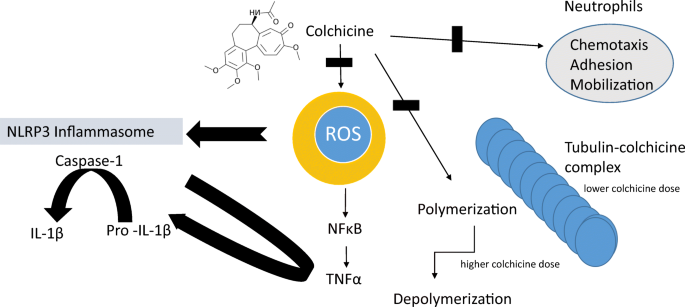 Source: link.springer.com
Source: link.springer.com
Other uses for colchicine include the management of pericarditis and familial Mediterranean fever. To minimize side effects and drug-drug interactions physicians should meticulously examine co-administration of medications that are substrates of either CYP3A4 enzyme or P-glycoprotein transporter. In gout it is less preferred to NSAIDs or steroids. Only 10 to 20 is excreted in the urine although this increases in patients with liver disease. Taking certain medications such as diuretics.
 Source: link.springer.com
Source: link.springer.com
Taking certain medications such as diuretics. Colchicine has a narrow therapeutic index so overdosing is a significant riskCommon side effects of colchicine include gastrointestinal upset. Colchicine is a lipophilic alkaloid and it is metabolized in the liver and primarily excreted via the gastrointestinal tract 80. In gout it is less preferred to NSAIDs or steroids. Taking certain medications such as diuretics.
 Source: clinicaltherapeutics.com
Source: clinicaltherapeutics.com
In gout it is less preferred to NSAIDs or steroids. The levels of IL-10 and IL-1ss excreted by the PBLM stimulated and unstimulated with viable Porphyromonas gingivalis test-tube were committed by the enzyme amplified immunoassay sensitivity method. Colchicine is a lipophilic alkaloid and it is metabolized in the liver and primarily excreted via the gastrointestinal tract 80. Colchicine has a narrow therapeutic index so overdosing is a significant riskCommon side effects of colchicine include gastrointestinal upset. Certain risk factors such as having a family historygenetic predisposition or having chronic kidney disease can affect the development of gout over time.
 Source: sciencedirect.com
Source: sciencedirect.com
Considering the fact that IL-10 polymorphisms are associated with various IL-10 expressions further research is needed to explain its involvement in these disorders and the formation of. Colchicine is neither an inhibitor nor an inducer of these two. Certain risk factors such as having a family historygenetic predisposition or having chronic kidney disease can affect the development of gout over time. Considering the fact that IL-10 polymorphisms are associated with various IL-10 expressions further research is needed to explain its involvement in these disorders and the formation of. To minimize side effects and drug-drug interactions physicians should meticulously examine co-administration of medications that are substrates of either CYP3A4 enzyme or P-glycoprotein transporter.
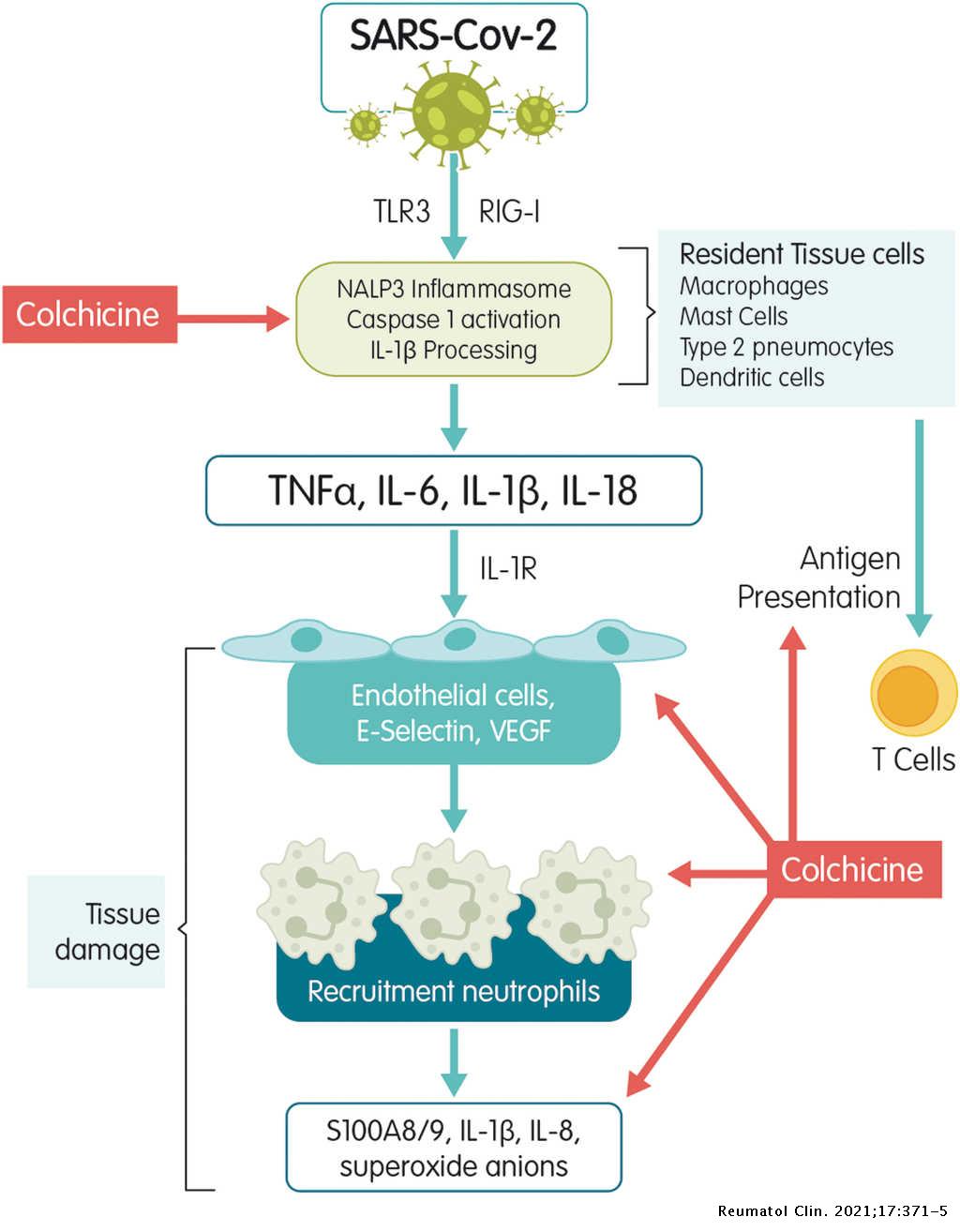 Source: reumatologiaclinica.org
Source: reumatologiaclinica.org
The plasma half-life of colchicine is approximately 9 hours but it can be detected in leukocytes and in the urine for at least 9 days after a. When this substance cant be sufficiently dissolved and excreted in the urine it starts to crystallize and those crystals deposit themselves in joints where they cause severe inflammation. In gout it is less preferred to NSAIDs or steroids. Other uses for colchicine include the management of pericarditis and familial Mediterranean fever. The plasma half-life of colchicine is approximately 9 hours but it can be detected in leukocytes and in the urine for at least 9 days after a.
If you find this site adventageous, please support us by sharing this posts to your favorite social media accounts like Facebook, Instagram and so on or you can also bookmark this blog page with the title how is colchicin excreted by using Ctrl + D for devices a laptop with a Windows operating system or Command + D for laptops with an Apple operating system. If you use a smartphone, you can also use the drawer menu of the browser you are using. Whether it’s a Windows, Mac, iOS or Android operating system, you will still be able to bookmark this website.

